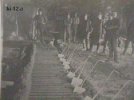ZDP-189 said:The term or word band was a bad choice, zone would maybe fit better. I would love to take her apart and see what happened and how strong and tough she is. I don't want to destroy her until I have a few like her or better and we have Rex back in the Lab.
I most sincerely thank you for your kind comments and today feel a stronger sense of community building.
Thanks Friends
The log on stuff is Dan's, this message was written by
Ed Fowler, as soon as I can figure how to get back to my own name I will do so.
Ooops, sorry Ed. I forgot to log out!
Jeff can sort it out for you.

